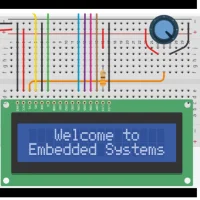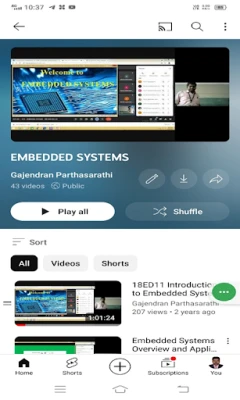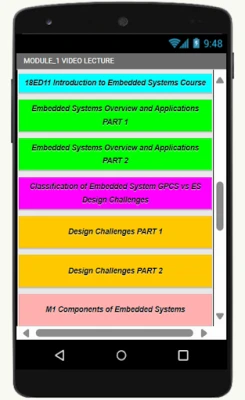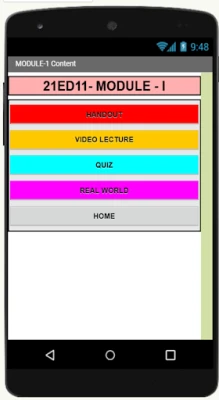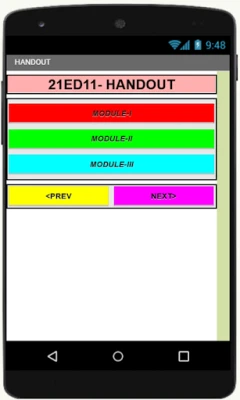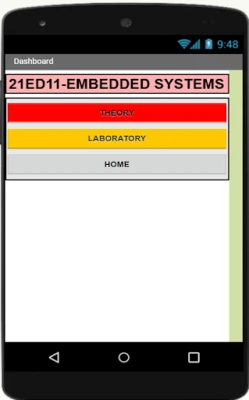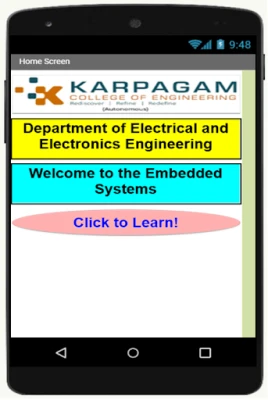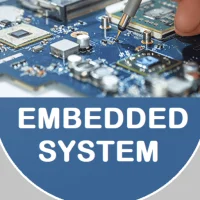
Latest Version
Version
1.0
1.0
Update
December 04, 2024
December 04, 2024
Developer
Gajendran Parthasarathi
Gajendran Parthasarathi
Categories
Education
Education
Platforms
Android
Android
Downloads
0
0
License
Free
Free
Package Name
appinventor.ai_pgajendran.EmbeddedSystems_V2
appinventor.ai_pgajendran.EmbeddedSystems_V2
Report
Report a Problem
Report a Problem
More About Embedded Systems
An embedded systems course is meticulously designed to provide a comprehensive and thorough understanding of the field by leveraging a variety of educational resources. The course structure integrates detailed theory handouts, engaging video lectures, interactive quizzes, real-world application links, and hands-on lab experiment demonstrations, ensuring that students gain both theoretical knowledge and practical skills essential for mastering embedded systems.
To begin with, the course includes meticulously prepared theory handouts that serve as the foundation for the students’ learning journey. These handouts are rich in content, covering a wide array of topics essential for understanding embedded systems. They delve into the definition and characteristics of embedded systems, distinguishing them from general-purpose systems. Embedded systems are specialized computing systems that perform dedicated functions or tasks within larger systems. They are characterized by their real-time operation, resource constraints, and reliability, making them integral to various applications, from consumer electronics to industrial automation.
The handouts also explore the historical evolution of embedded systems, tracing their development from simple microcontroller-based designs to complex, integrated systems with advanced capabilities. This historical perspective helps students appreciate the technological advancements that have shaped the current state of embedded systems and understand future trends and directions in the field. Additionally, the handouts provide a detailed overview of microcontroller and processor architectures, which are the core components of embedded systems. They cover various architecture of ARM and highlighting their features, advantages, and typical applications. This knowledge is crucial for selecting the appropriate microcontroller or processor for a given application, taking into consideration factors like performance, power consumption, and cost.
To complement the theoretical knowledge provided in the handouts, the course includes a series of video lectures. These lectures are designed to offer in-depth explanations of complex concepts, making them accessible and engaging for students. The video lectures employ a variety of teaching techniques to enhance understanding. They use animations and graphics to visually represent key concepts, making it easier for students to grasp abstract ideas. For example, animations can illustrate the operation of a microcontroller, showing how it processes instructions and interacts with peripherals. Such visual aids are invaluable in demystifying intricate topics and ensuring that students can follow along with the explanations.
In addition to visual explanations and practical demonstrations, the video lectures provide students with a broader perspective on embedded systems, discussing current trends, challenges, and future directions. For instance, guest lecturers might discuss the impact of emerging technologies like the Internet of Things (IoT), artificial intelligence, and edge computing on embedded systems. Such insights are invaluable for students, helping them understand the broader context of their studies and inspiring them to explore new possibilities in the field.
The handouts also explore the historical evolution of embedded systems, tracing their development from simple microcontroller-based designs to complex, integrated systems with advanced capabilities. This historical perspective helps students appreciate the technological advancements that have shaped the current state of embedded systems and understand future trends and directions in the field. Additionally, the handouts provide a detailed overview of microcontroller and processor architectures, which are the core components of embedded systems. They cover various architecture of ARM and highlighting their features, advantages, and typical applications. This knowledge is crucial for selecting the appropriate microcontroller or processor for a given application, taking into consideration factors like performance, power consumption, and cost.
To complement the theoretical knowledge provided in the handouts, the course includes a series of video lectures. These lectures are designed to offer in-depth explanations of complex concepts, making them accessible and engaging for students. The video lectures employ a variety of teaching techniques to enhance understanding. They use animations and graphics to visually represent key concepts, making it easier for students to grasp abstract ideas. For example, animations can illustrate the operation of a microcontroller, showing how it processes instructions and interacts with peripherals. Such visual aids are invaluable in demystifying intricate topics and ensuring that students can follow along with the explanations.
In addition to visual explanations and practical demonstrations, the video lectures provide students with a broader perspective on embedded systems, discussing current trends, challenges, and future directions. For instance, guest lecturers might discuss the impact of emerging technologies like the Internet of Things (IoT), artificial intelligence, and edge computing on embedded systems. Such insights are invaluable for students, helping them understand the broader context of their studies and inspiring them to explore new possibilities in the field.
Rate the App
Add Comment & Review
User Reviews
Based on 0 reviews
No reviews added yet.
Comments will not be approved to be posted if they are SPAM, abusive, off-topic, use profanity, contain a personal attack, or promote hate of any kind.
More »
Other Apps in This Category
More »










Popular Apps

EA SPORTS FC™ Mobile SoccerELECTRONIC ARTS

NFL Rivals - Football GameMythical Games

Madden NFL 25 Mobile FootballELECTRONIC ARTS

Retro BowlNew Star Games Ltd

Retro Bowl CollegeNew Star Games Ltd

Bee Farm: Idle TycoonYso Corp

Clear Scan - PDF Scanner AppIndy Mobile App

Solar Walk 2: Planetarium 3DVito Technology
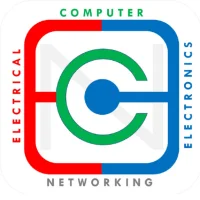
Embedded systems ProgrammingEducation Books Media

Cat & Knights: Samurai BladeWolf Inc.
More »










Editor's Choice

War Robots Multiplayer BattlesMY.GAMES B.V.

JumpJumpVPN- Fast & Secure VPNSOON BODYWERKZ

Cat & Knights: Samurai BladeWolf Inc.

SimCity BuildItELECTRONIC ARTS

Rookie Reaper: Souls-like RPGEuronCross

Shadow of Death: Offline GamesBrave HK Limited

Favor Runner: Deliver & EarnNeighborFavor, Inc.

Temple RunImangi Studios

ZArchiverZDevs

Progress TrackerProgress Tracker
